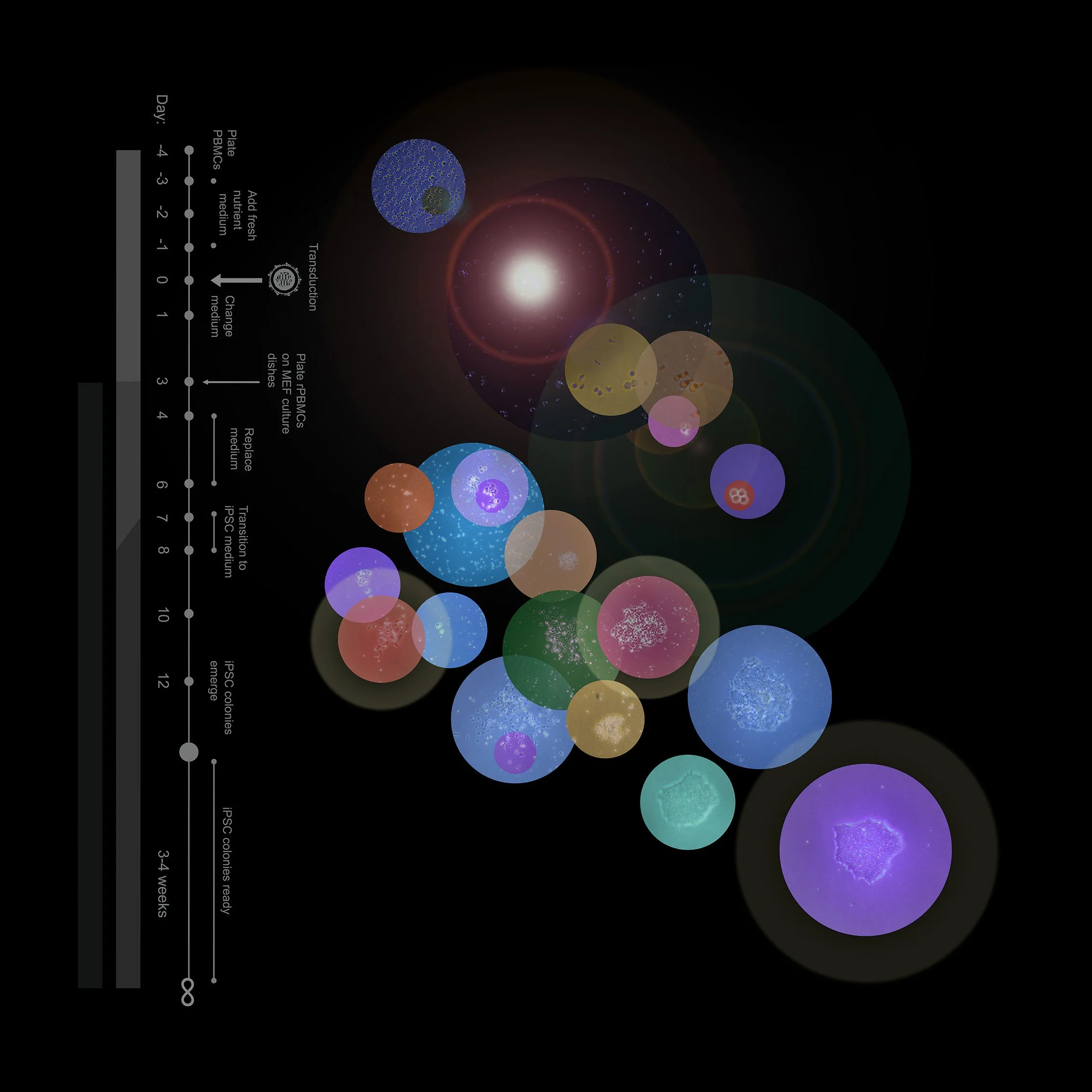Reprogramming Peripheral Blood Mononuclear Cells (PBMCs): A Composition Outside of Time, Scale and Certainty after Wassily Kandinsky
Reprogramming Peripheral Blood Mononuclear Cells (PBMCs): A Composition Outside of Time, Scale, and Certainty after Wassily Kandinsky (2023) is a photomedia work that creatively documents the transformation timeline of PBMCs into induced pluripotent stem cells (iPSCs). Inspired by the abstract style and philosophical ideas of Wassily Kandinsky, the piece presents cellular reprogramming as a dynamic, layered composition that transcends representations of biological certainty.
Using circular forms and vibrant colors, the work captures the fluid stages of cellular transformation, evoking a cosmic connection that links the microscopic with the universal. The colors allude to a sense of interconnectedness and the shared essence of all life, reflecting Kandinsky's belief in art as a means to access deeper spiritual and universal truths. In his work, Kandinsky sought to express the inner essence of things, seeing color, shape, and form as tools to communicate beyond the visible, material world. Similarly, Reprogramming PBMCs uses abstract forms and color to suggest the hidden, unpredictable nature of cellular reprogramming, blending scientific precision with an artistic interpretation that echoes Kandinsky’s quest to bridge the physical and the metaphysical.
This work was developed with A/Prof. Brad Sutherland and Dr Jo-Maree Courtney from the UTAS School of Medicine and formed part of the collaborative Transformation Studies exhibition at Moonah Art Centre in 2023.
PROJECT DETAILS:
Svenja Kratz, Reprogramming Peripheral Blood Mononuclear Cells (PBMCs): A Composition Outside of Time, Scale, and Certainty after Wassily Kandinsky, 2023, Photomedia: Digital Image on Matt Archival Paper.
Transformation Studies was initiated during a 2021|22 Australian Network for Art and Technology (ANAT) Synapse Residency in a creative partnership between the School of Creative Arts and Media and School of Medicine at the Univeristy of Tasmania. The Synapse program is made possible through the generous support of the Copyright Agency’s Cultural Fund. Lab outcomes were realised with generous assistance from Dr Ashish Mehta, Dr Ariane Gelinas-Marion, Dr Lachlan Brown, Natalie King and Ayda Issa. Creative works were realised with support fom Murray Antill, Nic Randall and Peter Marseveen. Many thanks are also extended to the UTAS Sutherland Peri-Vascular Research Group and the team at Moonah Art Centre.
Thank you.

